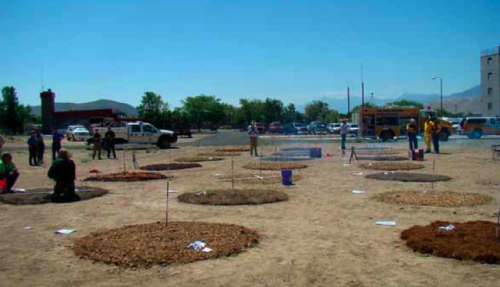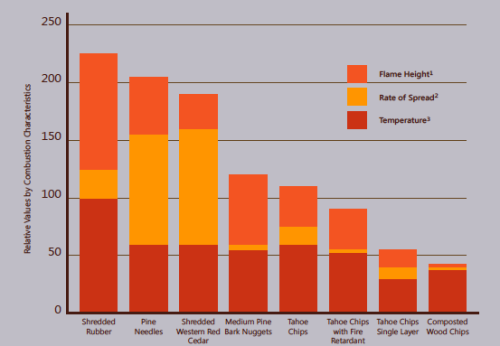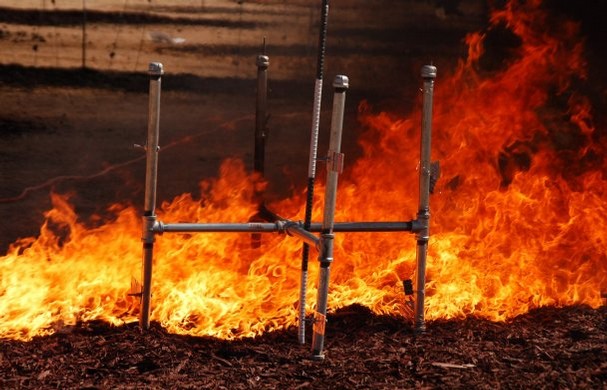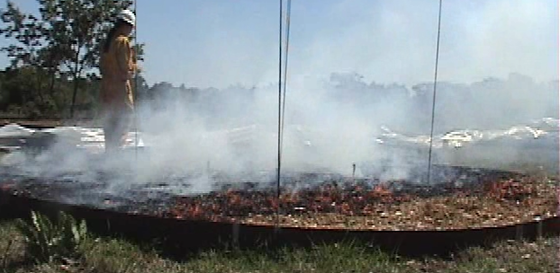Landscape Mulches & Fire Safety – Landscaping Santa Barbara, Ventura, Camarillo, Thousand Oaks
Mulch: The Benefits & Hidden Dangers
Landscape mulch has long been pushed by landscape architects and contractors as being extremely beneficial and highly recommended for all landscape areas. It prevents water evaporation from the soil which reduces supplemental water needs, improves soil quality, insulates plant roots, prevents weeds, and slowly releases nutrients into the soil. There is another side to mulch that most professionals and homeowners don’t talk about; fire danger. With any organic mulch, mulch derived from materials that were once living, there is always a danger of combustibility. Some mulches, however, are more combustible than others. The only organic mulch we recommend is recycled nitrolized wood shavings mulch, also known as composted mulch, not only because it works the best for plants and soil, but also because it is the least combustible.
Mulch Combustibility Experiment
We know that landscape design plays a key role in whether a home survives in a fire, click here to learn more about fuel modification landscape design, but the University of California and Nevada Cooperative Extensions and State Fire Departments believed it was important to come up with a model for mulch safety and design standards. They came together to run an in-field experiment, using 8 of the most common types of mulch, that would test the characteristics of a number of common mulches pertaining to combustibility, flame height, rate of speed, and temperature. They conducted this experiment on a hot August day with a temperature hovering around 100 degrees after letting each mulch sit outside on the soil for about two and a half months. They also simulated wind and light breezes with fans.
Experiment Results
The results, seen above, proved that composted wood chips mulch was the lease combustible and safest mulch overall, while shredded rubber mulch was by far the most combustible and dangerous. Composted wood chips mulch tended to burn without any flame, only smoldered, spread extremely slowly, and with a fairly low temperature. Shredded rubber, on the other hand, burned with a flame of over 3 ft. tall, was one of the top three for rate at which fire spread, and had the highest temperature at over 630 degrees.
To learn more about the experiment and full results and observations from the University of California & Nevada Cooperative Extensions, click here.
Above: Rubber mulch burns with great intensity, high flame, extremely high heat, and rapid spread.
Above: Composted mulch, also known as nitrolized wood shavings, had no active flame, only smoldered, spread at an extremely slow rate of speed, and had one of the lowest temperatures. This is the only organic mulch recommended and used by Scarlett’s Landscape on our projects.





